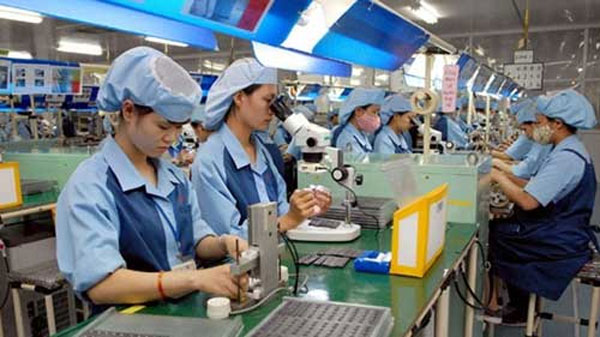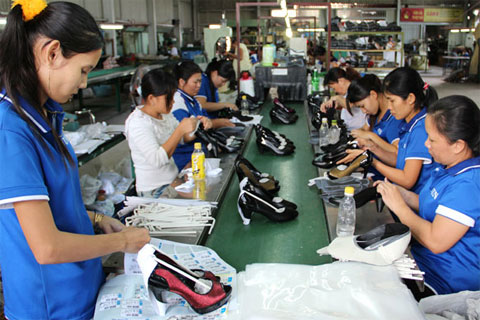China’s transport infrastructure initiative to have bad impact on Vietnam’s plan: expert
China’s transport infrastructure initiative to have bad impact on Vietnam’s plan: expert
China’s transport infrastructure initiative, including the establishment of the Asian Infrastructure Investment Bank (AIIB) and other related proposals, will pose a threat to Vietnam’s infrastructure development plan in the near future, an expert from the Vietnam Institute for Economic Research and Policy (VEPR) said at a seminar on the Chinese economy in Ho Chi Minh City last week.
Those Chinese plans, from “One Belt, One Road” to the 21st Century Maritime Silk Road Economic Belt, is what should be called “infrastructure traps,” which may be triggered when China and regional countries begin to set up road and railroad infrastructures, Pham Sy Thanh, director of the Chinese Economic Studies Program under the VEPR, said on Friday.
Once those plans are executed, they will hinder Vietnam’s infrastructure development, Thanh added.
This is part of the economic diplomacy of China, with over 70 initiatives last year, Thanh said, citing figures from the Vietnamese Ministry of Foreign Affairs.
Most initiatives in Beijing’s economic diplomacy previously focused on trade and investment promotion, while only a few were centered on connectivity, but under the name of projects run by the Asian Development Bank, in which Japan owns a major stake, Thanh said.
They included the expansion of the road networks in the Greater Mekong Sub-Region or others in central Asia.
But the tide turned two years ago, with the new Xi Jinping administration and a new focus – the establishment of regional transport networks and intra-regional infrastructure connections funded by China.
The new focus serves China’s new goal: the internationalization of its currency, the Chinese yuan, and a regional financial zone dominated by China, he said.
This goal will be supported by a boost to the trade and investment relations between China and regional countries, backed by better connectivity, Thanh added.
What China is doing is strengthening its bonds with regional countries given stronger trade and investment ties, with the core of the plan being massive infrastructure projects, Thanh said.
Beijing’s plan to set up a massive regional transport network to and from China will change the big picture of the transport sector, especially in the Greater Mekong Sub-Region, which covers most countries and territories located along the Mekong River, including Cambodia, Laos, Myanmar, Thailand, Vietnam, and China's Yunnan Province.
If the network, including roads, expressways and railroads, is expanded southward to the western part of the Greater Mekong Sub-Region, via investment by the AIIB, Vietnam will be in trouble.
As the network will consolidate the transport infrastructures from Yunnan, via Cambodia, Laos, and Thailand, to Malaysia and Singapore, and from Yunnan, via Myanmar, to East Asia, what Vietnam is building, including many deep-sea ports, across the country will be obsolete, as Hanoi does not have good connectivity with the remaining countries in the Greater Mekong Sub-Region, Thanh remarked.
Once the new network is formed, the other parts of the Greater Mekong Sub-Region will be a new magnet for foreign investors who will gradually leave Vietnam for places with better infrastructure, Thanh added.
Many ports in Myanmar are in the hands of Chinese investors, while many others are pouring money into Thailand’s important ports, he said.
Once the network reaches those ports, no more goods manufactured in the Greater Mekong Sub-Region, except for Vietnam, need to be sent to Vietnamese ports, including those in Ho Chi Minh City, for export, he added.
All of those factors will consolidate the economic positions of Thailand, Laos, Cambodia and Myanmar, while weakening that of Vietnam in the long run, Thanh warned.
Vietnam has wasted a lot of its resources in building ports in the past time, Thanh said.
Currently, with six clusters of ports located across the country, only one is positioned in the global maritime transportation route, thus Vietnamese ports receive only a handful of large-scale 100,000-ton container ships.
So, once the network of infrastructure and ports is finished, the maritime transportation route might not go through Ho Chi Minh City ports anymore, let alone the remaining ports, Thanh said.
Regional ports and the infrastructure connected to and from them, including those in Thailand, Malaysia, Singapore, and Indonesia, are getting better and better, Thanh added.
To solve this problem, Vietnam should focus on developing the port cluster in the southern province of Ba Ria-Vung Tau, and boost connectivity with Laos, Cambodia, and Thailand, he said.





















